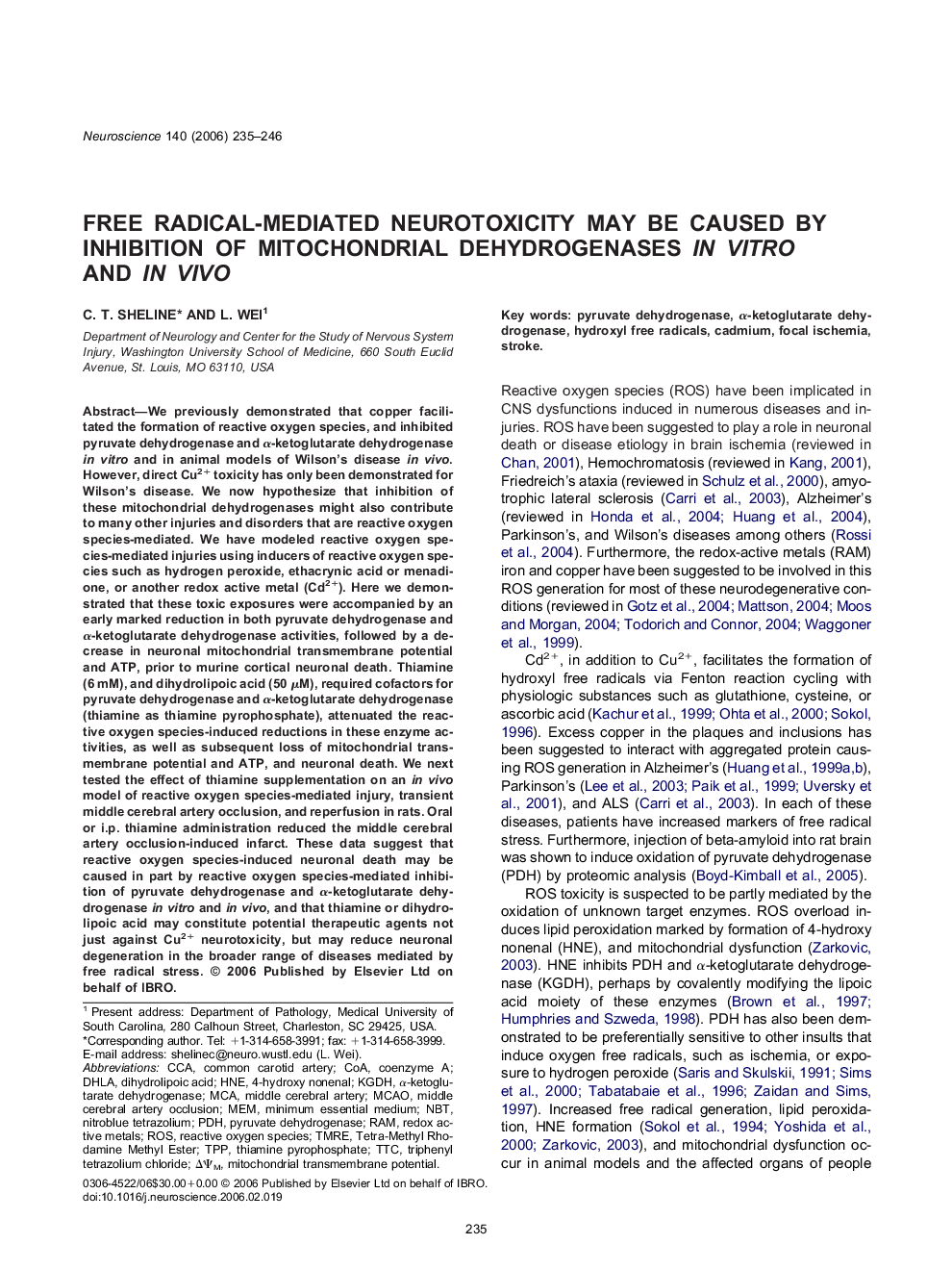| کد مقاله | کد نشریه | سال انتشار | مقاله انگلیسی | نسخه تمام متن |
|---|---|---|---|---|
| 4342820 | 1295902 | 2006 | 12 صفحه PDF | دانلود رایگان |

We previously demonstrated that copper facilitated the formation of reactive oxygen species, and inhibited pyruvate dehydrogenase and α-ketoglutarate dehydrogenase in vitro and in animal models of Wilson’s disease in vivo. However, direct Cu2+ toxicity has only been demonstrated for Wilson’s disease. We now hypothesize that inhibition of these mitochondrial dehydrogenases might also contribute to many other injuries and disorders that are reactive oxygen species-mediated. We have modeled reactive oxygen species-mediated injuries using inducers of reactive oxygen species such as hydrogen peroxide, ethacrynic acid or menadione, or another redox active metal (Cd2+). Here we demonstrated that these toxic exposures were accompanied by an early marked reduction in both pyruvate dehydrogenase and α-ketoglutarate dehydrogenase activities, followed by a decrease in neuronal mitochondrial transmembrane potential and ATP, prior to murine cortical neuronal death. Thiamine (6 mM), and dihydrolipoic acid (50 μM), required cofactors for pyruvate dehydrogenase and α-ketoglutarate dehydrogenase (thiamine as thiamine pyrophosphate), attenuated the reactive oxygen species-induced reductions in these enzyme activities, as well as subsequent loss of mitochondrial transmembrane potential and ATP, and neuronal death. We next tested the effect of thiamine supplementation on an in vivo model of reactive oxygen species-mediated injury, transient middle cerebral artery occlusion, and reperfusion in rats. Oral or i.p. thiamine administration reduced the middle cerebral artery occlusion-induced infarct. These data suggest that reactive oxygen species-induced neuronal death may be caused in part by reactive oxygen species-mediated inhibition of pyruvate dehydrogenase and α-ketoglutarate dehydrogenase in vitro and in vivo, and that thiamine or dihydrolipoic acid may constitute potential therapeutic agents not just against Cu2+ neurotoxicity, but may reduce neuronal degeneration in the broader range of diseases mediated by free radical stress.
Journal: Neuroscience - Volume 140, Issue 1, 2006, Pages 235–246